click for a larger image
But enough grumbling about weight limits. Thanks to TQ letting me know early everything worked out.
|
click for a larger image |
I started
preparing for this eclipse in summer 2013. At first the
plan was to just repeat my 2006 Libya setup
including full computer control. That would have been ideal and
would have resulted in pictures of the quality of 2006. However,
in early 2014 I learned that we would have rather severe weight
limits. So my computer and EQ-1
mount were staying at home.
Instead I designed a lightweight (1.5 Kg) platform that would give me
polar alignment. On this I placed an AstroTrac
head to track the
sun. Finally a Manfrotto 410
geared head for fine positioning of
the scope. But enough grumbling about weight limits. Thanks to TQ letting me know early everything worked out. |
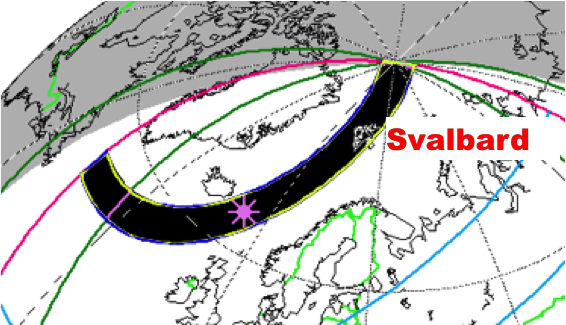 |
The figure to the left shows the path of totality. |
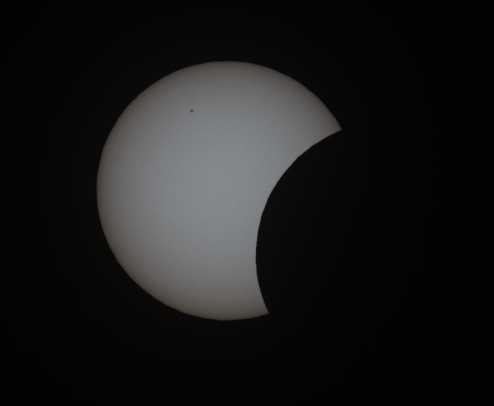 Partial Eclipse at 10:32:33 (1/640) |
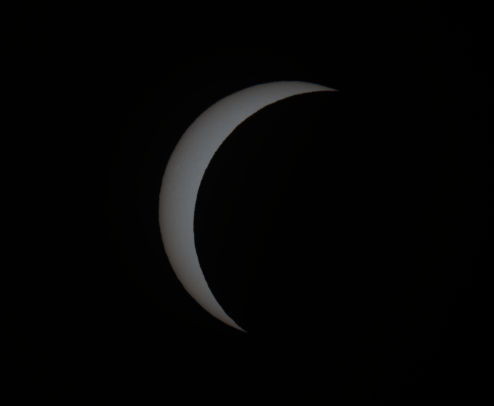 Partial Eclipse 11 02 42 (1/640) |
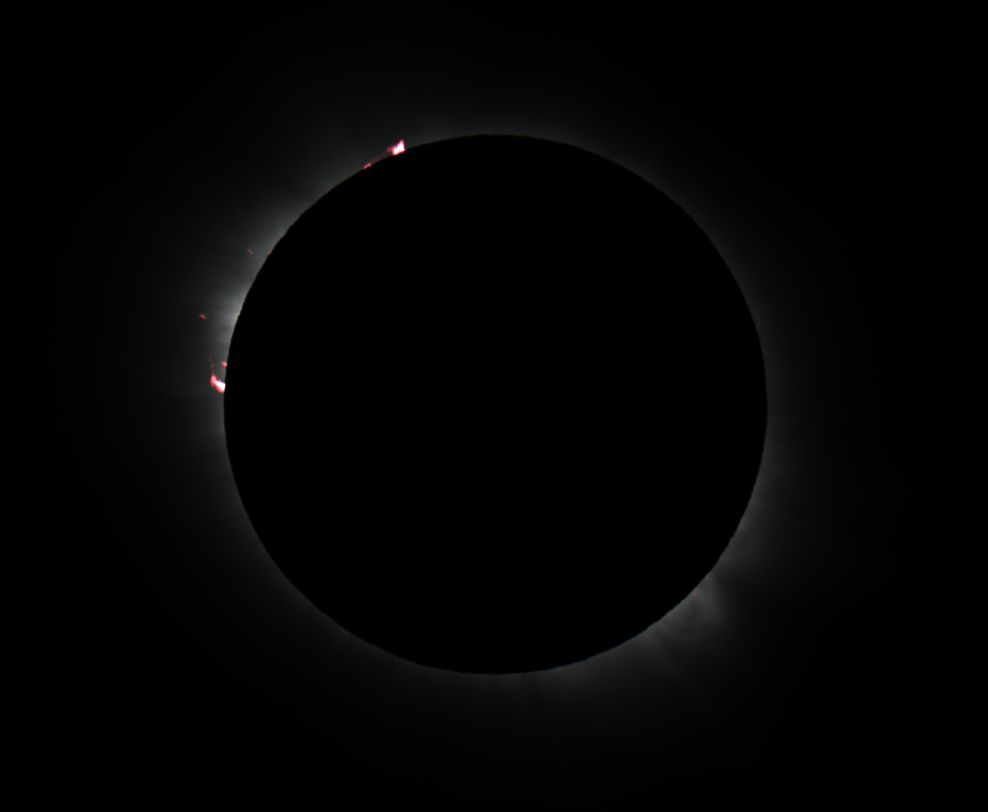 11:12:01 1/640 |
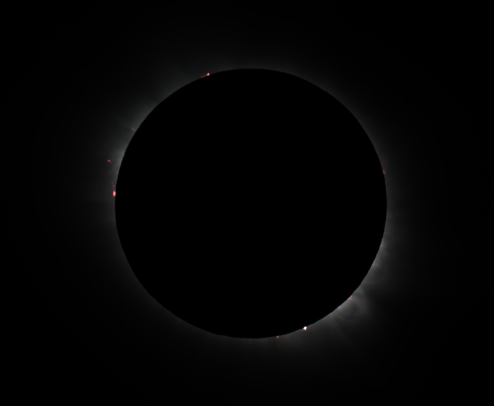 1/640 component of HDR image |
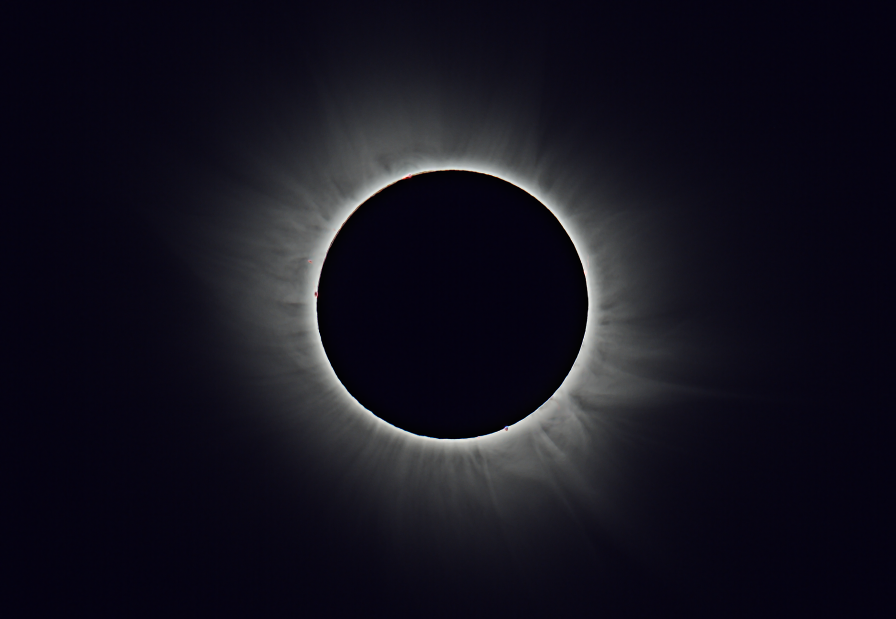 Processed to emphasize inner corona |
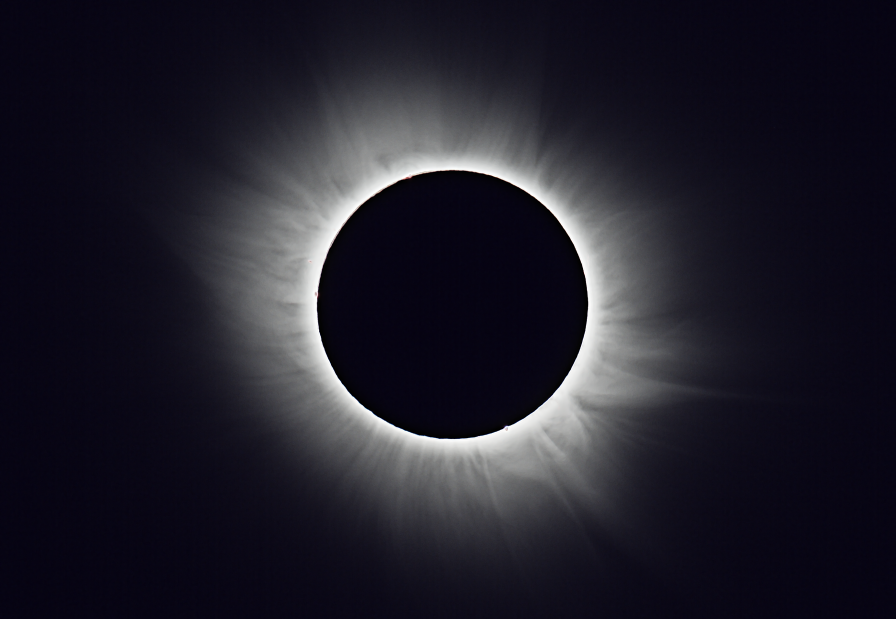 Processed to emphasize Outer Corona |
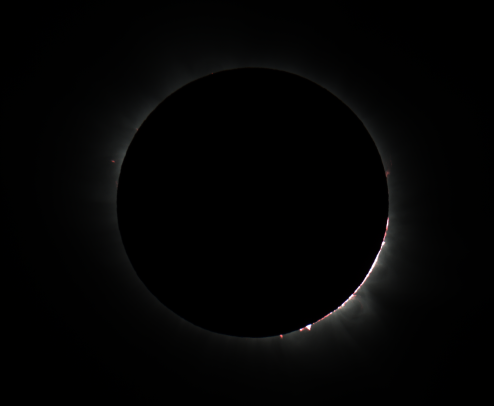 11:13:40 at 1/640 |
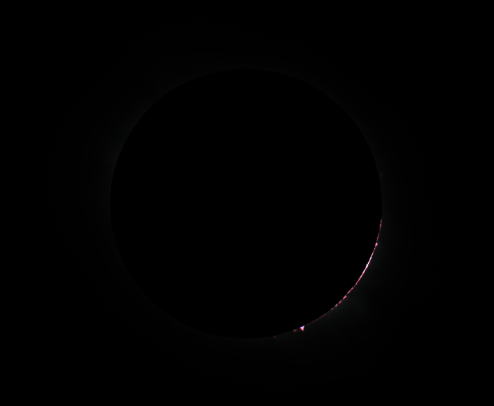 Chromosphere 11:13:42 1/5000 |
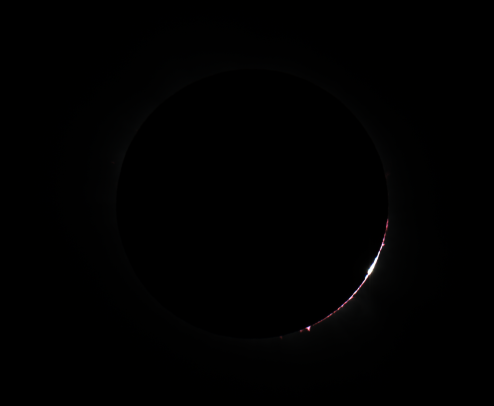 Baily's Beads 11:13:45 1/5000 |
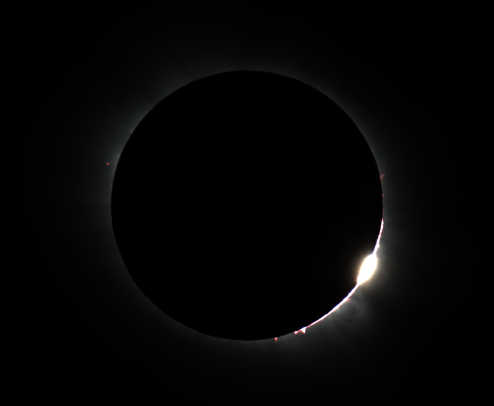 Diamond Ring 11:13:46 1/640 |
 courtesy Cheri Justis courtesy Cheri Justis |
